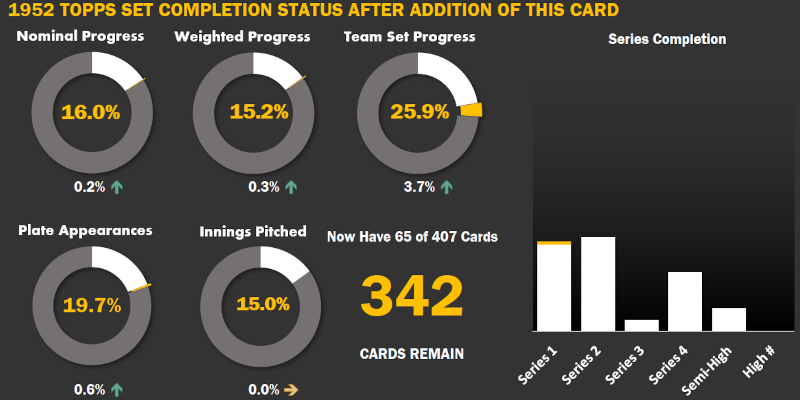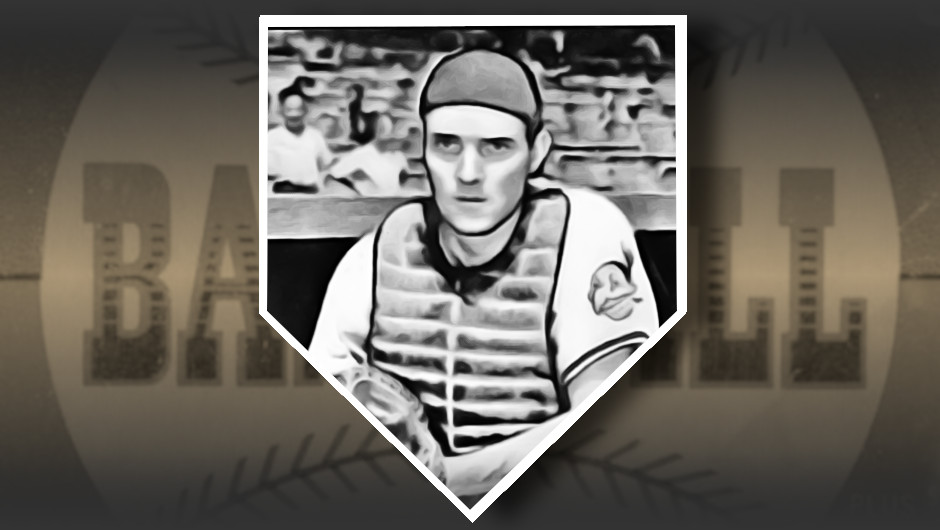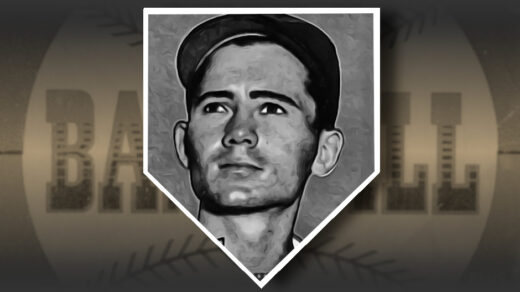The ’52 Topps set gets in a good photo early in the first series with card #17. Cleveland catcher Jim Hegan is shown getting his catching gear ready in front of the dugout. The photo is apt as he was considered one of the best defensive catchers of the era. How good was he? Ivan Rodriguez is considered one of the best defensive catchers of all time. His 45.7% success rate in throwing out base stealers is often given as the first supporting fact for this claim. Hegan threw out 49.8%. He was also durable, playing behind the plate in 152 of the team’s 154 games in 1949.
Hegan’s defense was largely offset by an unimpressive bat. A lifetime .228 hitter, he was not much of a threat at the plate. Typically batting eighth ahead of pitchers, the slow running backstop was often intentionally walked to set up double plays. Hegan led the American League in intentional walks every year from 1948-1951.


I really like the sepia-toned grandstands in the background of the shot. Two kids are seen over Hegan’s right shoulder, presumably watching the photography session taking place in front of them. I wonder if either of them ever recognized themselves on this baseball card.
Let’s Take a Closer Look at That Logo
I talked earlier about the good ways this card stands out from other Topps cards from 1952. There’s another aspect that makes viewers do another take: Chief Wahoo. Topps was the first card manufacturer to prominently display team logos on cardboard, introducing the practice with this set.
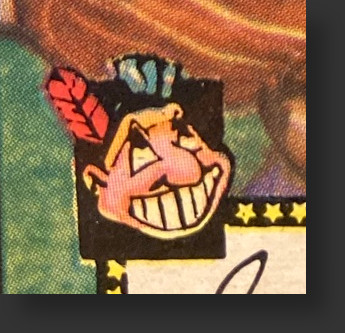
Cleveland had only adopted the version of the logo seen above one year earlier and continue to make use of it until shortly before the team’s recent rebranding as the Guardians. Arguments over whether or not the team should drop the Indians name easily went back and forth until the logo was brought up. At that point any semblance of the name being respectful and rooted in honor falls way as Native American groups successfully compare the cartoon face to the likes of Sambo.
Amazingly this wasn’t the first incarnation of the caricature. The earliest version of the logo came into use alongside new uniforms in 1946 and featured even more, umm…”stylized” elements. The team issued photo packs at Municipal Stadium and by mail order from 1947-1950 to promote their new look. As one of the most popular faces of the team, much of Hegan’s memorabilia prominently displays the design.
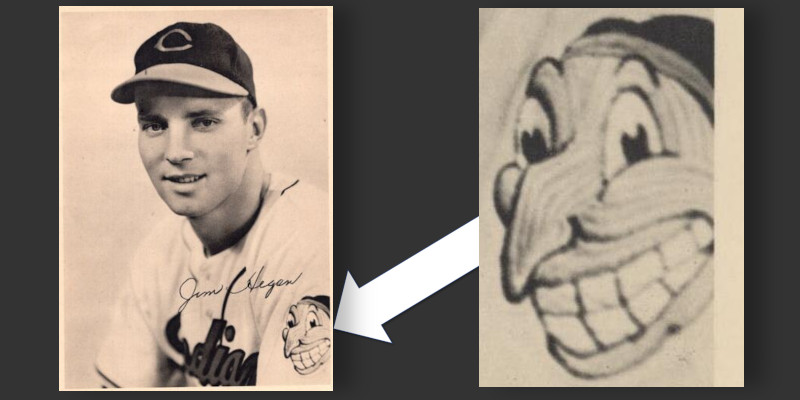
Yikes. Yes, it was issued in a time where a cartoon like that wasn’t shocking, but then again the 1940s/50s were a time when racial insults were fairly common. Cleveland toned it down for the 1951 season but its echos appear in the photos of Cleveland players in ’52 Topps and the modified logo on each card.

